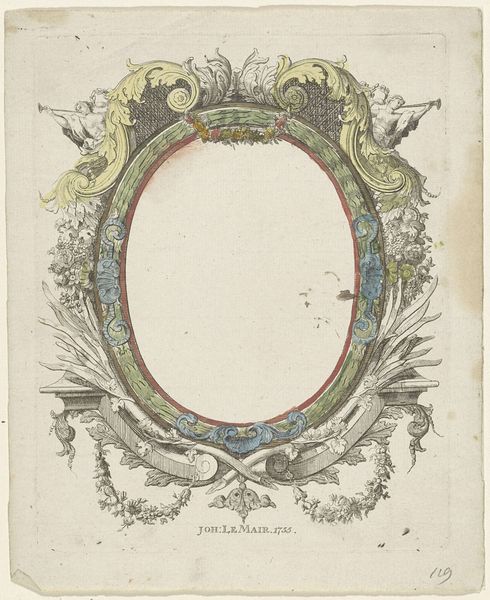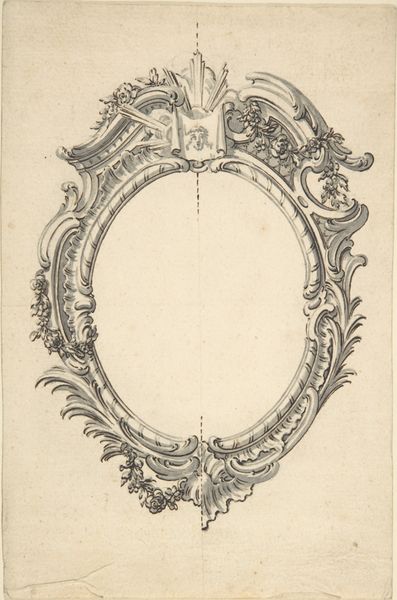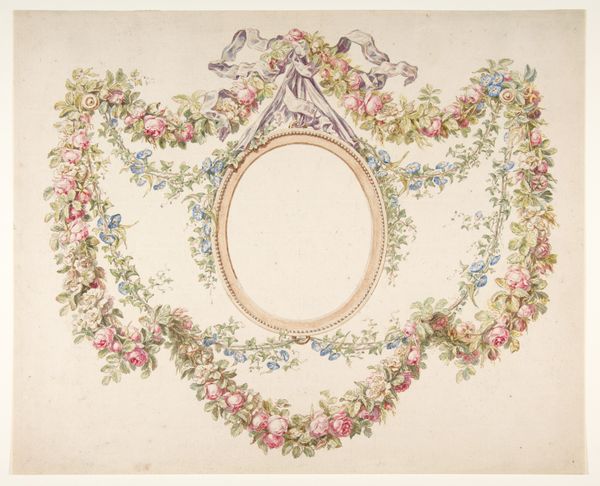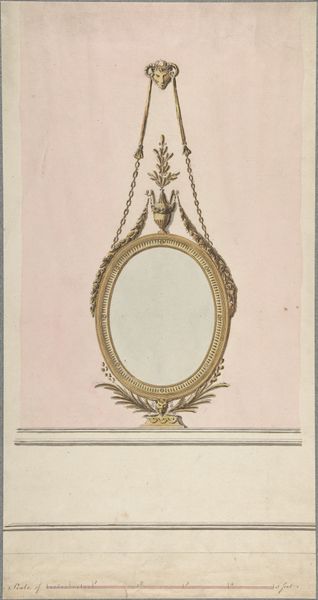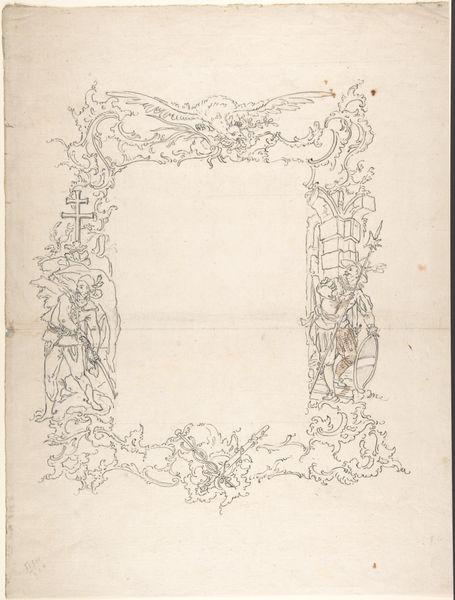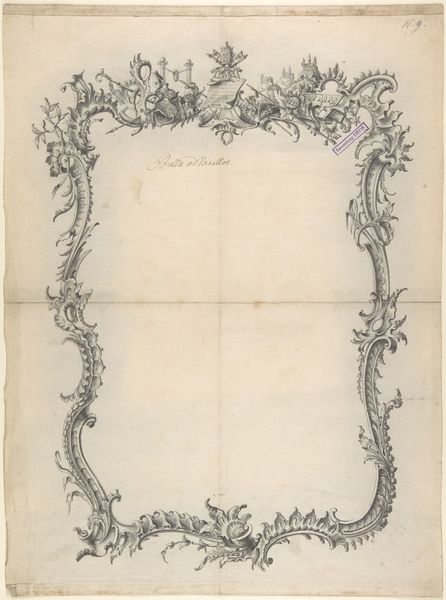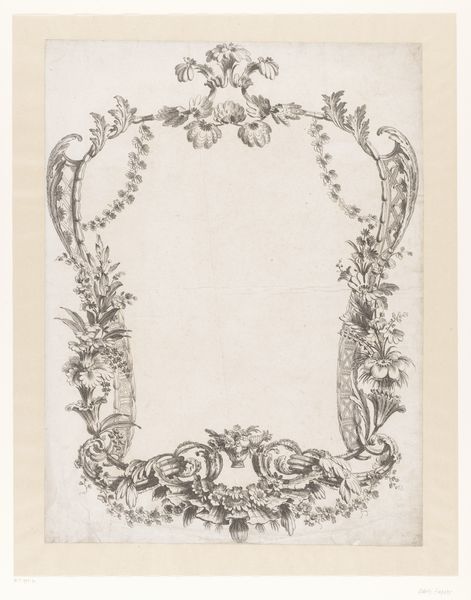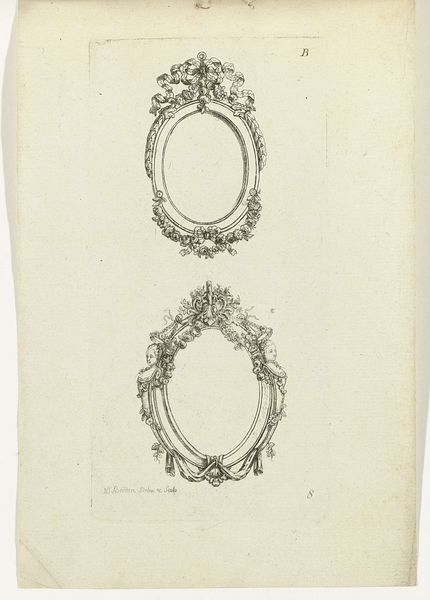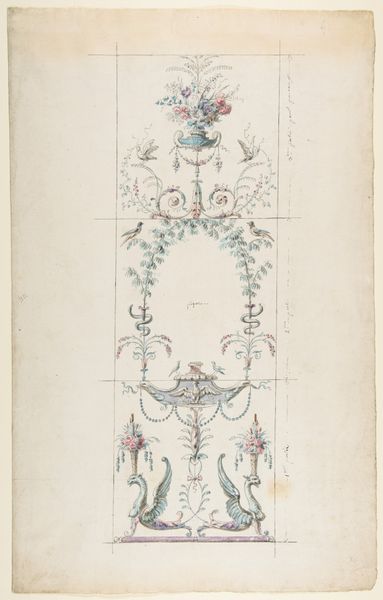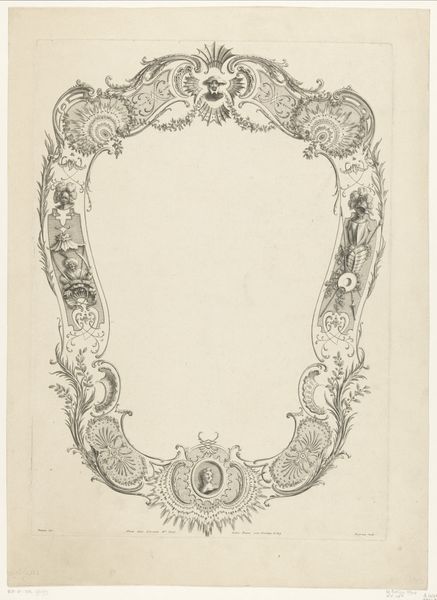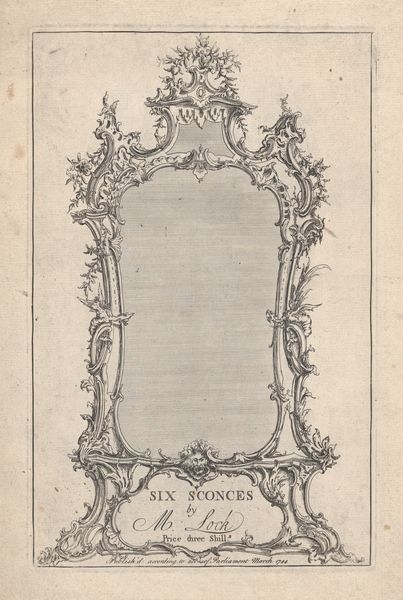
drawing, watercolor, pen
#
drawing
#
toned paper
#
light pencil work
#
form
#
personal sketchbook
#
watercolor
#
ink colored
#
line
#
pen work
#
sketchbook drawing
#
pen
#
watercolour bleed
#
watercolour illustration
#
decorative-art
#
sketchbook art
#
watercolor
#
rococo
Dimensions: height 185 mm, width 146 mm
Copyright: Rijks Museum: Open Domain
Curator: Today, we're examining "Ovale ornamentele lijst" or "Oval ornamental frame," a drawing crafted around 1755 by Johannes Le Mair using pen, ink, and watercolor on toned paper. What strikes you first? Editor: The pastel hues, the flourish of the line work; it exudes a certain lightness, almost an airy quality that suggests the frivolity often associated with the Rococo. Curator: Indeed. This work epitomizes Rococo sensibilities— a decorative frame embodying the lighthearted aristocratic tastes prevalent in the 18th century. Note the angels flanking the upper corners; such motifs weren't merely aesthetic choices. Editor: I see those putti with trumpets; are they announcing something? Perhaps a marriage, or some kind of alliance, maybe an aesthetic shift, if we read the frame as symbolic of art itself? Curator: Interesting thought. Given the context, Le Mair, while working during the Enlightenment, still incorporated the era's emphasis on spectacle, status, and pageantry. The frame itself acts as a declaration of power, of the elite commissioning such works. The flowing lines and asymmetry defy rigid convention. Editor: Asymmetrical yet balanced, visually seductive, if a bit patriarchal considering its historic function as a luxury item for a very privileged demographic. I notice the garland, grape vines; they're not arbitrary. Curator: You’re spot on. Consider these visual elements: grapevines suggesting abundance, while flowers and ornate scrolls symbolized beauty, luxury, and often, transient pleasure. Le Mair used common Rococo symbolism to visually represent the wealth and taste of the commissioner. Editor: A reflection, perhaps, of values we’re still grappling with today in our ongoing efforts toward equitable economies within art. The past and present in constant conversation. Curator: Precisely. It invites us to interrogate not only artistic choices but the power dynamics inherent in patronage. Le Mair's seemingly decorative drawing opens conversations far beyond aesthetics. Editor: So a frilly, light piece carries heavy historical weight that reveals larger issues of inequality, as art often can. Curator: Indeed. Art becomes a mirror, reflecting not only its time but also offering insight for future transformation.
Comments
No comments
Be the first to comment and join the conversation on the ultimate creative platform.
